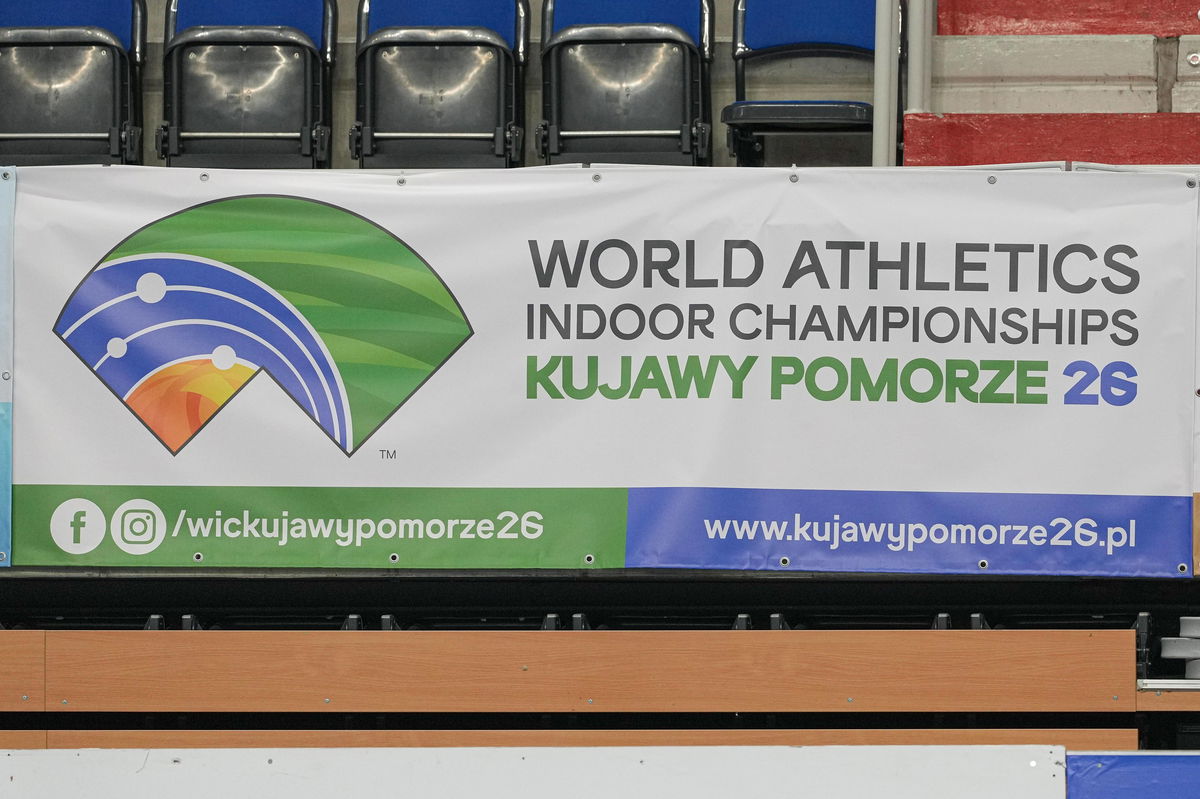
Imago
2025.02.22 Torun Lekkoatletyka Halowe mistrzostwa Polski N/z logo Halowe Mistrzostwa Swiata Torun 2026 Foto Michal Laudy / PressFocus 2025.02.22 Torun Athletics Polish Indoor Athletics Championships World Athletics Indoor Championships Torun 2026 logo Credit: Michal Laudy / PressFocus/NEWSPIX.PL — newspix.pl POLAND OUT PUBLICATIONxNOTxINxPOL

Imago
2025.02.22 Torun Lekkoatletyka Halowe mistrzostwa Polski N/z logo Halowe Mistrzostwa Swiata Torun 2026 Foto Michal Laudy / PressFocus 2025.02.22 Torun Athletics Polish Indoor Athletics Championships World Athletics Indoor Championships Torun 2026 logo Credit: Michal Laudy / PressFocus/NEWSPIX.PL — newspix.pl POLAND OUT PUBLICATIONxNOTxINxPOL
With the end of the Tokyo World Athletics Championships, the season has officially drawn to a close. The offseason is when changes to the sport are implemented, and World Athletics has already gotten started, with the focus shifting to next year’s Indoor Championships at the Kujawsko-Pomorska Arena in Toruń, Poland. The organization has unveiled a fresh qualifying criteria along with key changes across multiple events. While some of these updates were deemed necessary, they’ve sparked mixed reactions among fans. But before diving into the debate, let’s break down the most important ones regarding qualification minimums.
Watch What’s Trending Now!
The 21st World Athletics Indoor Championships are set to take center stage from 20–22 March 2026, marking Poland’s return as host after Sopot welcomed the world back in 2014. The Kujawsko-Pomorska Arena, already lauded for the 2021 European Indoors, is now gearing up for a global spectacle. Exciting changes are afoot: the qualifying criteria for most track and field events have been relaxed, making it easier for athletes to secure their place and adding a fresh wave of anticipation to the competition.
For the 2026 World Athletics Indoor Championships, the entry standards for track events have eased slightly compared to Nanjing 2025. Higher qualifying times mean runners don’t need to hit blistering speeds just to compete. Take the men’s 60m, for instance: the standard shifted from 6.55 to 6.59 seconds.
ADVERTISEMENT
Standards for the 2026 World Indoor Championships. The qualification window opens in November. pic.twitter.com/QSV8MDDY97
— Global Athletics Hub (@glblathletichub) October 2, 2025
On the women’s side, the 60m moved from 7.15 to 7.20 seconds. Middle-distance events saw similar adjustments, with the men’s 1500m easing from 3:33.50 to 3:36.00, and the women’s 3000m from 8:33.00 to 8:35.00. These tweaks open the door for a wider field of sprinters and distance runners, ensuring that there is more competition next year. Track events weren’t the only ones to undergo changes; field events also saw their fair share of adjustments.
In the field events, the changes are subtle but significant. Some standards have eased, making qualification more attainable; for instance, the men’s triple jump dropped from 17.40 m to 16.90 m, the women’s shot put from 19.50 m to 18.90 m, and the men’s high jump from 2.34 m to 2.30 m. Meanwhile, events like the pole vault and long jump raised their rigorous benchmarks. These adjustments strike a balance, keeping the competition fierce while opening doors for emerging talent. Well, the fans are having diverging thoughts about the hubbub. Let’s have a look at what they have to say about this change.
ADVERTISEMENT
World Athletics’ new rules for the 2026 indoor championships send fans into a frenzy
One of the few events whose qualifying standard increased for next year’s Indoor Championships is the men’s pole vault. Last year it was 5.85m, but this year it has risen to 5.90m—a significant jump. A fan sympathizing with Ben Broeders, whose personal best is 5.85m, exclaimed, “5.90M FOR PV—oh my, Ben Broeders’ heart can’t take this.”
ADVERTISEMENT
Meanwhile, a middle-distance fan was less than thrilled by the timing changes, arguing that they reflect a weakening stance of the sport: “These middle-distance times seem soft these days, even indoors. Especially when compared to field event standards.”
When asked, “Will world rankings count?” it turns out athletes can qualify via their position on the Top Performances list from 1 November 2025 to 8 March 2026. This list functions essentially as a ranking of the best results in each event. Additionally, winners of each 2025 World Indoor Tour event automatically qualify as wild cards.
Some fans noted that the entry criteria have generally become easier, likely to encourage more athletes to participate, “Interestingly, all are ‘easier’ than for Nanjing. I’m presuming WA is aiming to fill more of the fields with auto Qs (and/or making allowances for later opening of the window)?”
ADVERTISEMENT
Finally, one fan highlighted the competitiveness of the women’s 400m standard, “51.75 for the women’s 400m would have been the 7th fastest time in the semi-finals.”
For the entry standards, athletes must achieve them during the qualification period from November 2025 to 8 March 2026. It will now be interesting to see who qualifies under the new World Athletics rules; with the criteria being relaxed and tightened based on the event, we could see a spate of new qualifiers. What are your thoughts on the new changes?
ADVERTISEMENT
ADVERTISEMENT
ADVERTISEMENT

